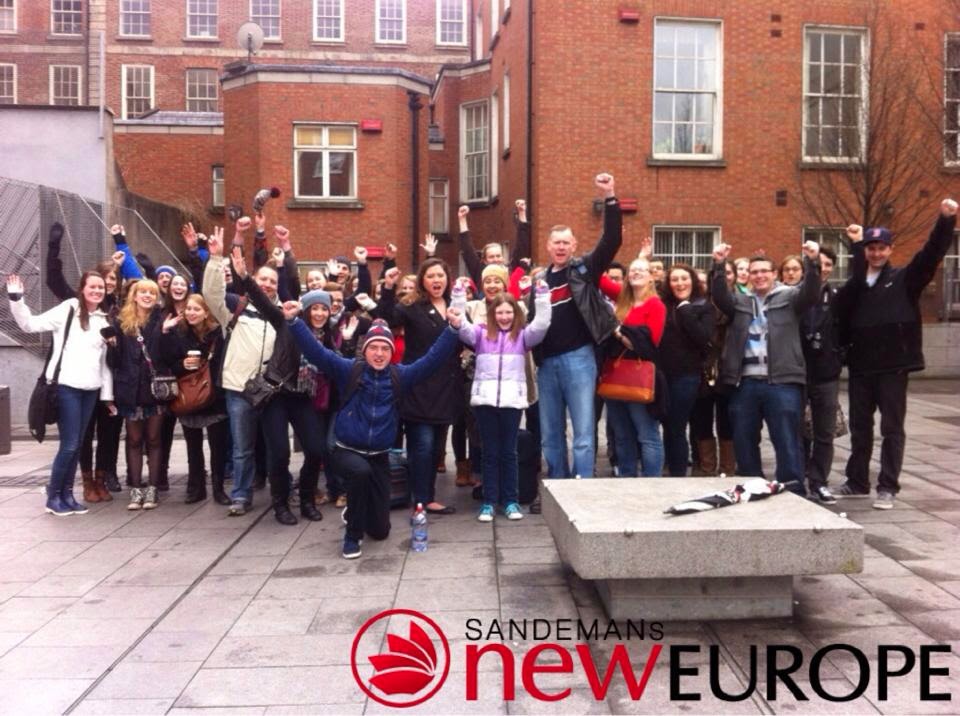 Dublin, in Irish known as Baile Átha Cliath, is the capital of Ireland. It sits on the River Liffey and started off as a Viking settlement in the 9th century.
Dublin, in Irish known as Baile Átha Cliath, is the capital of Ireland. It sits on the River Liffey and started off as a Viking settlement in the 9th century.  It became the island's main city after the Norman invasion in 1169. More than +525,000 people live in Dublin but the greater metro area is home to 1.8 million people, more than ⅓ of the population.
It became the island's main city after the Norman invasion in 1169. More than +525,000 people live in Dublin but the greater metro area is home to 1.8 million people, more than ⅓ of the population..jpg) Dublin Castle was built in 1204 on the orders of King John of England. It remained the seat of British rule in Ireland until 1922. Now the complex is home to government offices.
Dublin Castle was built in 1204 on the orders of King John of England. It remained the seat of British rule in Ireland until 1922. Now the complex is home to government offices..jpg)
The General Post Office, on O'Connell Street, was the focal point of the 1916 Easter Rising. Here's a Rick Steves video I found on YouTube about it.
©Rick Steves
.jpg) Dublin has two cathedrals. Both of which were converted from Catholic to Protestant on the orders of Queen Elizabeth I. Christ Church Cathedral was founded in 1030. It is the oldest building in Dublin and went through massive restoration in the 19th century.
Dublin has two cathedrals. Both of which were converted from Catholic to Protestant on the orders of Queen Elizabeth I. Christ Church Cathedral was founded in 1030. It is the oldest building in Dublin and went through massive restoration in the 19th century..jpg)
.jpg)
.jpg)
Leinster House was built from 1745 to 1748. Since 1922, it has been home to the Oireachtas which is the national parliament.
.jpg)
.jpg) Famime was presented to the city in 1997. The bronze sculptures commemorate the Great Irish Famine of 1845 - 1849. During this time, about 1 million people died and another 1 million emigrated, mostly to the USA. The combination reduced the total island's population by about 25%.
Famime was presented to the city in 1997. The bronze sculptures commemorate the Great Irish Famine of 1845 - 1849. During this time, about 1 million people died and another 1 million emigrated, mostly to the USA. The combination reduced the total island's population by about 25%. .jpg) |
| The Temple Bar in Temple Bar (district) |
Temple Bar isn't a single bar. It is a district south of the river and is home to the city's best nightlife.
.jpg)
In Merrion Square is a statue of Oscar Wilde, the Irish writer and poet. In the early 1890s, he was one of the most popular playwrights in London.
.jpg) The Molly Malone statue, of the fictitious fishmonger, celebrates Dublin's millennium in 1988.
The Molly Malone statue, of the fictitious fishmonger, celebrates Dublin's millennium in 1988..jpg)
.jpg) Trinity College is Ireland's oldest university. It was established in 1592 by Queen Elizabeth I as a Protestant institution, modeled after Cambridge and Oxford. Eventually, Catholics and women were allowed to attend. However, the Catholic Church wasn't too keen on young Catholics picking up Protestant values and banned Catholic students from attending. Until 1970, Catholic students who enrolled at the university without special dispensation were excommunicated.
Trinity College is Ireland's oldest university. It was established in 1592 by Queen Elizabeth I as a Protestant institution, modeled after Cambridge and Oxford. Eventually, Catholics and women were allowed to attend. However, the Catholic Church wasn't too keen on young Catholics picking up Protestant values and banned Catholic students from attending. Until 1970, Catholic students who enrolled at the university without special dispensation were excommunicated.The University library is home to the Book of Kells, which is an illustrated manuscript written by monks around 800 AD. Here's another Rick Steves video about it.
©Rick Steves
.jpg) A great way to get your bearings in the city is to take one of the Dublin free walking tours. A local guide takes you around the city for 2.5 - 3 hours. You can normally find a free walking tour in most of Europe's major cities.
A great way to get your bearings in the city is to take one of the Dublin free walking tours. A local guide takes you around the city for 2.5 - 3 hours. You can normally find a free walking tour in most of Europe's major cities.

























No comments:
Post a Comment